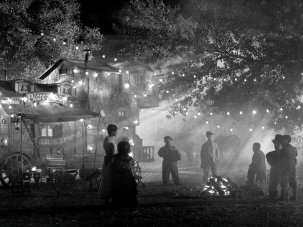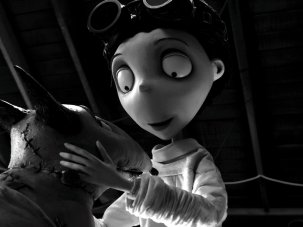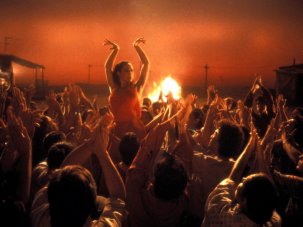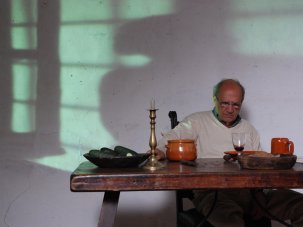from our August 2013 issue
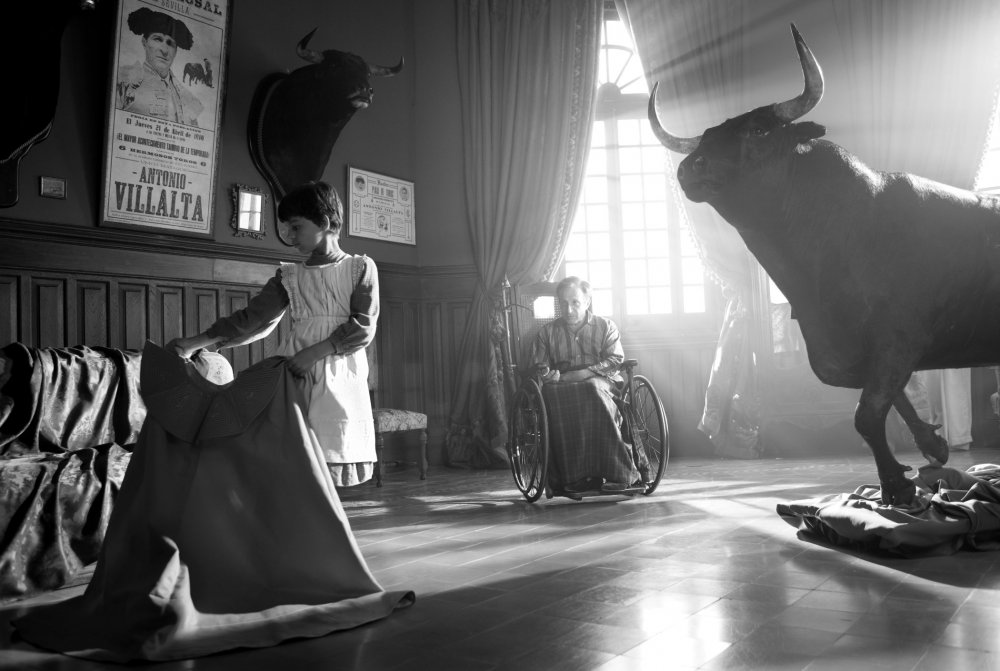
Caped crusader: Sophía Oria as the young Carmencita and Daniel Giménez Cacho as her father
Flamenco, torero, fiesta… from the 1950s onwards these aspects of Spanish life were massively extolled by dictator General Franco to sell the illusion of Spain as a happy, passionate, party-loving nation – encapsulated in the tourist-friendly motto ‘Spain is different’ – and in a bid to open up the country’s previously autarkic economy. These elements, particularly as figured in the distinctly chauvinist populist cinema endorsed by the regime, were hugely popular in some quarters, but inevitably loathed and rejected in many others, and for many years to come. Whichever position you take, there’s no denying that these cliches are still an essential part of the country’s cinematic imaginary.
For his second feature Blancanieves, Spanish writer-director Pablo Berger reconfigures these stereotypes into an initially ludicrous-seeming yet ultimately fantastical and fantastically entertaining celebration/deprecation of all things Spanish, by way of a silent black-and-white Snow White narrative relocated to 1920s Andalucía. Berger’s aim is clear: to examine the more populist elements of Spanish film history from the perspective of the present; and to reflect, in a personal and refreshingly nostalgia-free manner, on the country, its history and its traditions through the prism of international film history.
An initially ludicrous-seeming yet ultimately fantastical and fantastically entertaining celebration/deprecation of all things Spanish
Carmencita is the newborn daughter of Antonio Villalta, a celebrated matador who gets badly gored by a bull at a corrida. The shock prompts his heavily pregnant flamenco-singer/dancer wife to go into premature labour, but she doesn’t survive the birth. Grief-stricken, Villalta rejects the newborn and falls into the open arms of his nurse, Encarna (Maribel Verdú, familiar from 2001’s Y tu mamá también, giving a brilliant incarnation of evil here), who’ll eventually become Carmencita’s cruel, power-crazed stepmother. Sent to live with her grandmother, Carmencita will only reunite with her father when the former dies. Not for long, though, but long enough for him to train his daughter in the craft of bullfighting – eventually the way she’ll honour his name.
|
Spain/France/Belgium 2011 Crew Cast Dolby Digital Distributor StudioCanal Limited |
A self-professed silent-cinema obsessive, Berger conceived Blancanieves right from the outset as a black-and-white silent film, long before the unashamedly feelgood The Artist (2011) and Miguel Gomes’s beautifully downbeat Tabu (2012). Those films’ critical and commercial success occurred too late to permit any potential increase in Berger’s severely curtailed budget, though you would never guess as much from what’s up there on screen – a visually ravishing evocation of the times, in which the burning light of Andalucía seems to spill out from the frame.
Unlike The Artist’s nostalgic facsimile of a generic, homogenous silent era, however, Blancanieves was never imagined as a reproduction of that fertile period of film history, but rather as a reinterpretation of it, and a meditation on the origins of film language itself. As such, Blancanieves includes a melting-pot of film references seamlessly melded and subsumed into a well-developed story. There’s German expressionism in the angular shapes of the long, shadowy corridors in the family’s lusciously gothic home; Eisenstein in the extreme close-ups on the contorted expressions of secondary characters; von Stroheim in the passion and determination of the female protagonist. Throw in the names of Lang, Tourneur, Duvivier and L’Herbier too, and Blancanieves feels like a film revelling brilliantly in the heterogeneity of its multiple influences.
But it’s thanks to Berger’s adoption of Melodrama (with a capital M, à la Sirk) – big passions, big hatreds, slightly too big performances at times – that Blancanieves makes the transition from the international to the local seem so effortless. Taking the tradition of España negra (or ‘Black Spain’ – ie crime, corruption, bigotry), Berger turns it back on itself, firstly to exaggerate it to the point of grotesque deformation, then to deconstruct it to create something completely new. His gaze, simultaneously that of an insider yet necessarily distanced, ultimately creates a hybrid, or what the filmmaker has playfully defined as ‘Iberian Hollywood’ – a self-reflexive exercise that bridges the typical Españolada (a clichéd Spanish film more often than not folkloric in flavour) and the classical Hollywood movie.
Not unlike Guillermo del Toro and Tim Burton, Berger pushes his characters towards grand guignol and takes pains to highlight the cruelty and darkness in classic fairytales, partly by situating this version of Snow White not in fantasyland but in a particular historical context. The abundant allusions to 1920s Spain aren’t mere window dressing. Encarna, for example – who sports a flapper’s haircut – doesn’t have a mirror that lies about her beauty, but instead, Norma Desmond-style, seeks and finds her reflection in the gossip columns of the recently launched Lecturas magazine (the forerunner to ¡Hola!) – a critique on celebrity culture then and now.
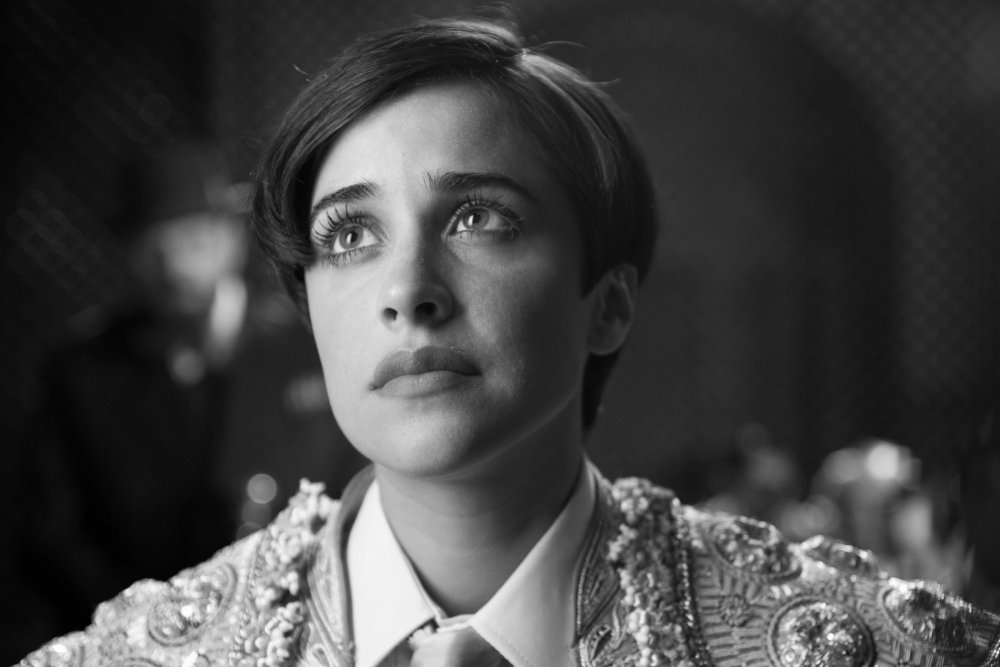
Snow White, Spanish-style: Macarena García
In Blancanieves, Spain is presented as a freak show, or to use a more autochthonous term, like an esperpento, a very particular form of the grotesque that brings to mind the Spanish surrealism of compatriot Luis Buñuel and the blackness of Luis García Berlanga, as well as Tod Browning’s Freaks (1932). When Carmencita is left half-dead and amnesiac after Encarna’s lover tries to kill her, she’s naturally nicknamed Blancanieves (‘Snow White’) by the circus troupe of six (not seven) bullfighting dwarves who save her. Their show takes them from town to town, where they mimic the corridas with a heifer rather than a bull, a sort of warm-up act just prior to the real thing; their real-life equivalents, the Enanitos Toreros, do actually exist in Spain.
Carmencita decides to join them. Through this narrative strand (including a pardoned bull), the bloody art of bullfighting is both questioned and openly mocked. What’s more, although seemingly celebrated in the figure of Villalta, in fact bullfighting in Blancanieves is the trigger of every pain and evil. The conflicts and contradictions that reside at the heart of this most recognisable of Spanish stereotypes – the backbone of the film – spin the traditional source tale of Blancanieves into a bacchanal of Spanishness, which Berger transforms into the very essence of nightmares.
The tone, however, is never condemnatory, nor nostalgic, nor least of all parodic. On the contrary, Berger makes the viewer aware of the context shaping his characters and the decisions they make, as he did previously in Torremolinos 73, the story of a couple struggling to make ends meet during the last years of the dictatorship (when repression and censorship were at a new – desperate – high) by embarking on a series of homemade porn films.
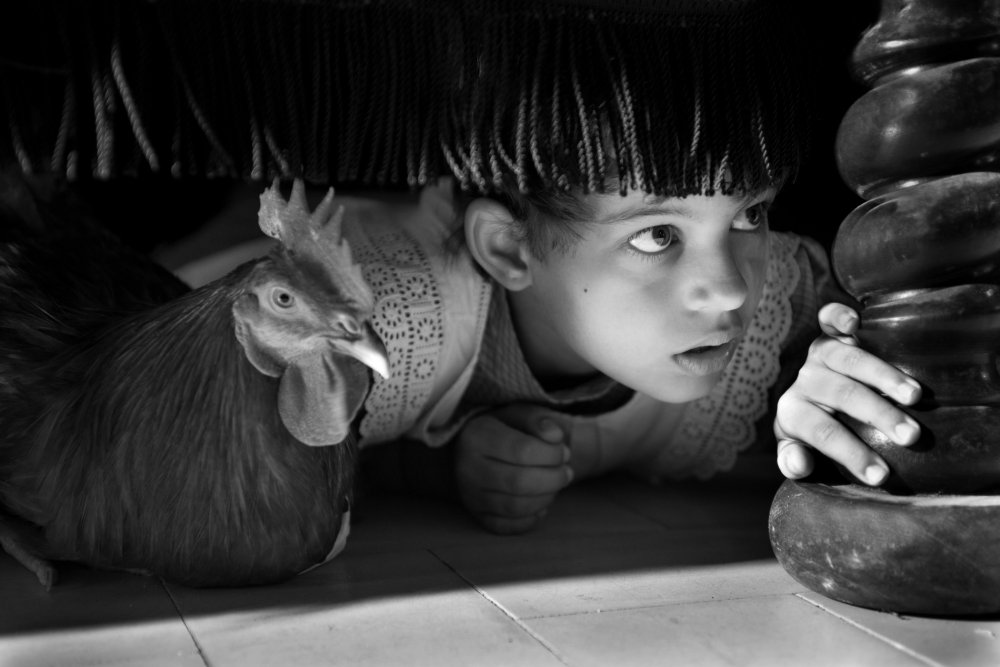
What makes Blancanieves transcend its hall of distorting mirrors – as did Torremolinos 73 – is precisely its palpable warmth and respect for its subject-matter, underpinned by a recognition of the family as source of the most exalted love but also the fiercest pain, which inevitably brings to mind the Spanish south as imagined by Lorca. One of the film’s most striking scenes encapsulates these contradictions: the still stunning Angela Molina (That Obscure Object of Desire), as Carmencita’s grandmother Doña Concha, dances flamenco with her young granddaughter in the streets of Seville, but as the mood and tempo escalate to an uncontrolled frenzy, a moment of pure happiness and celebration turns sour as Doña Concha collapses dead.
In Blancanieves the pleasure resides as much in the layers upon layers of references to film history, to Spanish history, to fairytales, to Hollywood entertainment, as it does in its story of a little girl who loses everything. But unlike the evocative source tale, Carmencita-Blancanieves’s destiny is not to be passively rescued by a prince but rather to find her true self. She does so by accepting herself as she is and by managing to shake off amnesia and remember her own past… not unlike the way Berger weighs the good and bad, the high and low, the bright and dark of Spain’s past and present.
-
Sight & Sound: the August 2013 issue

In this issue: Frances Ha’s Greta Gerwig – the most exciting actress in America? Plus Ryan Gosling in Only God Forgives, Wadjda, The Wall,...
-
The Digital Edition and Archive quick link
Log in here to your digital edition and archive subscription, take a look at the packages on offer and buy a subscription.




